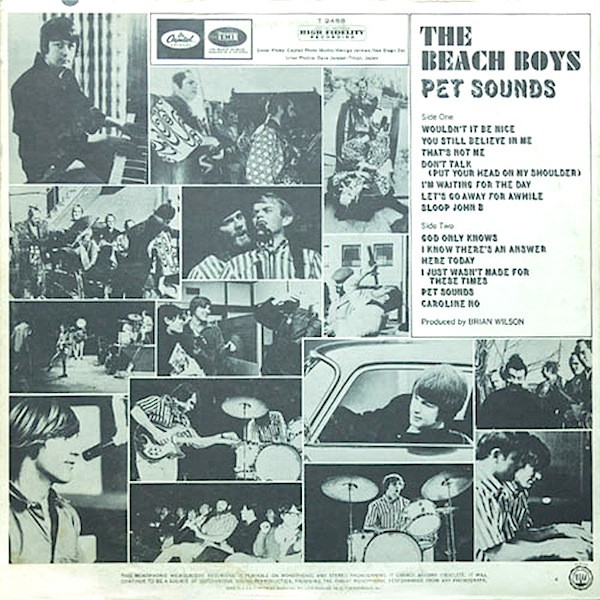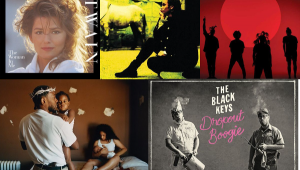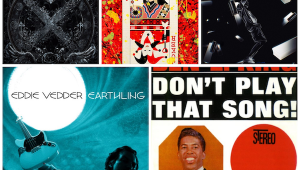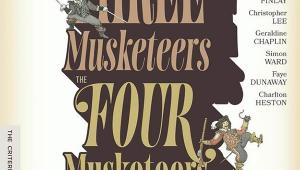Giles Martin on Mixing The Beach Boys’ Seminal Pet Sounds in Atmos
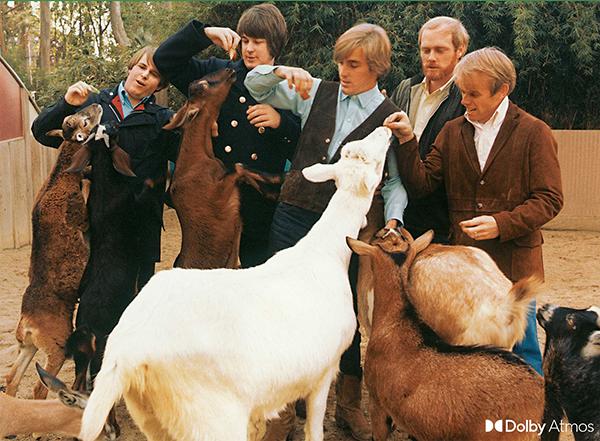
In the mid-1960s, The Beatles and The Beach Boys had what could be described as a “friendly” creative rivalry. When Beach Boys visionary Brian Wilson heard December 1965’s Rubber Soul, he countered with May 1966’s Pet Sounds. When The Beatles heard Pet Sounds, they answered with August 1966’s Revolver—and so on, and so on. Discerning audiophiles and appreciatively attentive listeners alike are the ultimate winners in said rivalry, since these and other seminal ’60s releases from both artists are still considered to be benchmark rock-era recordings to this day.
Last year, producer Giles Martin brought Revolver into the 21st century with a truly mesmerizing Atmos mix—one that was controversial with the more traditional Beatles fans out there, but also one that really captured the potential of the burgeoning 360-degrees format for those of us willing to give it a full headspin. “When I first started doing those Atmos mixes, I knew the idea of me touching anything on Revolver was suspect,” Martin allows. “But then people hear it and they go, ‘Actually, we quite like it. When are you going to do the next one?’” (Me, I’m all in for either Rubber Soul or Sgt. Pepper getting the Martin-ized Atmos treatment next—or, hey, why not both?)
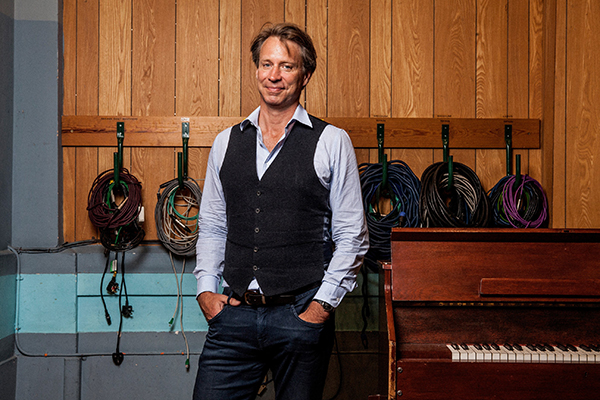
And now, Martin (in studio repose above, via a photo by Alex Lake) has turned his expert ear to doing an Atmos mix of the aforementioned Pet Sounds at the behest of The Beach Boys braintrust—specifically, Brian Wilson himself, along with longtime Beach Boys remixer/remasterer Mark Linett and reps of the band’s record label, Capitol. “Obviously, I have to respect that decision, however wrong they might be,” Martin says with a hint of his typical self-deprecation. “I went into it bearing in mind that a lot of the younger fans may just know the stereo version. I had to go, ‘What’s good about the stereo? What’s good about the mono? What can be good about this Atmos mix? How can I, with the power of hindsight, do a good job of this Atmos mix?’ That’s really the way it worked.”
Currently only available digitally, Martin’s Atmos version of Pet Sounds was made available for streaming via Apple Music, Amazon Music Unlimited, and Tidal on June 2—and it’s as stunning as one might expect, more often than not putting you right there in the room with The Beach Boys and The Wrecking Crew in all the best possible ways. Just cue up “Wouldn’t It Be Nice,” “Caroline, No,” the instrumental title track “Pet Sounds,” and—most especially—“God Only Knows” to hear exactly what I mean.
Recently, Martin, 53, and I got on Zoom together across the Pond to discuss how he made sure his Pet Sounds Atmos mix stayed true to the music’s “real” intent, what his approach to dealing with all those infamous Beach Boys vocal stacks entailed, and how he made sure “God Only Knows” comes across as being nothing short of heavenly in its Atmos incarnation. I keep looking for a place to fit in / Where I can speak my mind. . .
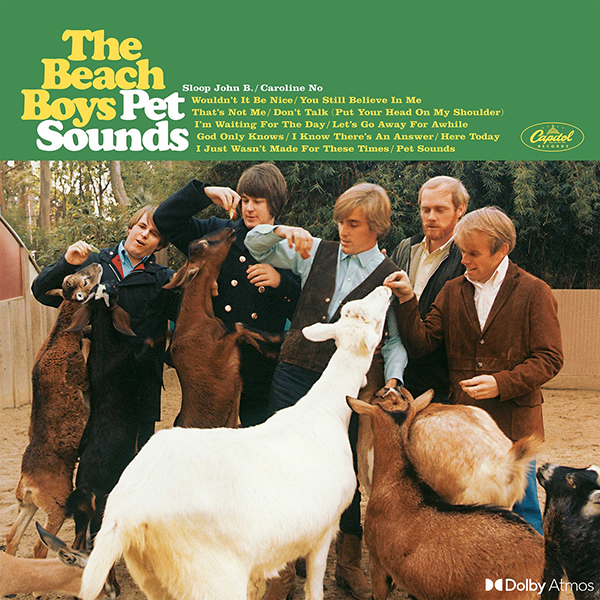
Mike Mettler: I think you made an interesting comment when you said in the press notes that Pet Sounds is not a “psychedelic” album, but it’s more of a “classical” album instead. Can you give me a little bit more about what you meant by that?
Giles Martin: Well, I think traditionally, we see psychedelic recordings as having a lot of electronics and a lot of effects—a lot of otherworldly sounds—but Pet Sounds doesn’t really have that, and that wasn’t really Brian [Wilson]’s style. His otherworldly sounds came from a combination of instruments, instrumentation, and orchestration, if you like, in the same way the traditional classical composers would do the same thing. For example, [early-20th century French impressionist composer Maurice] Ravel famously tried to create sunrise and shimmering strings, and that was where Brian was going and what he did in his arrangements.
Funnily enough, I think that probably influenced my dad [Sir George Martin] to a certain degree for what he did [as the producer] with The Beatles. People hadn’t heard anything like it before—and it was probably surprising for The Beach Boys to hear that kind of response to it since they were essentially thought of as a pop band, or even a boy band, at the time.
So, that’s what I suppose I meant by saying Pet Sounds doesn’t seem to be a psychedelic album. The fact is, it’s fairly traditional—but just traditional as far as what instruments were used, and the strange way in how they were used, Is probably the best way of putting it.
Mettler: If I remember correctly, wasn’t there a listening session in London that Paul McCartney went to where he actually got to hear the Pet Sounds record? [Beach Boys bandmember] Bruce Johnston had brought it overseas and Paul heard it, and then he went and wrote “Here, There and Everywhere” [a key track on August 1966’s above-mentioned Revolver] right after that.
Martin: Yeah. I mean, there’s no doubt that, whether it came from listening sessions or not, by Paul’s own admission, he was heavily influenced by The Beach Boys. It’s funny—I was just listening to a remix of something I had mixed previously of “Back in the U.S.S.R.” [from November 1968’s The Beatles, a.k.a. The White Album], which, of course, is Paul’s homage to The Beach Boys.
Mettler: Yeah, it all fits together so perfectly, in a sense. I mean, recently enough, you’ve gone from doing Revolver in Atmos to doing Pet Sounds in Atmos, so you have two bookends, in a way, of what was going on at the height of popular music at the time.
Martin: I was stuck in 1966 for a while there, yeah. (both laugh)
Mettler: Anyway, we’re often so reverential toward the mono mix of Pet Sounds—and with good reason, mind you—but I think what you’ve basically done here in Atmos is you’ve taken the mono and gone from the center outward. Is that a fair assessment of your M.O. for this Atmos mix? As in, you honor what was done originally, but you’re just opening it up wider. Is that fair to say?
Martin: Yeah. With this sort of thing, there are no specific rules to anything—as there shouldn’t be, do you know what I mean? I listened to the mono because that’s what Brian oversaw, and what he mixed. Brian oversaw the stereo mix with [producer/engineer] Mark Linett as well, and I also know that mix by spending time with my dad [Sir George Martin] and Brian in California when we went over there to do a [BBC documentary] series called The Rhythm of Life [in 1997]. When my dad sat with Brian and pushed the faders on “God Only Knows,” Brian said. “It already sounds better, George! I prefer this mix.” [MM adds: Go to 3:10 in the following videoclip to see that amazing exchange unfold.]
Mettler: Tell me how you approached working with the Pet Sounds vocal stacks.
Martin: The vocals, obviously, are so important because it’s The Beach Boys. In a way, that’s the easiest thing because they are The Beach Boys, and they’re so good. It’s much easier to mix things that already sound that good.
Mettler: Sometimes it’s all so otherworldly, to borrow that word from earlier.
Martin: It is otherworldly; that’s fair enough. And this is such an unsexy word, but it’s the precision. I think we get excited by humans doing inhuman things, and The Beach Boys did things that no one else has really been able to do since, in that way. There are so many different facets to it because it’s conversations between humans. That’s what backing vocals are, in a way—do you know what I mean? It takes more than one voice to do a backing vocal—otherwise, it’s the same person, over and over again. I think that was the secret about The Beach Boys, in that they made such a good sound together.
And I suppose, in doing an immersive mix for Pet Sounds, I had to be very respectful of the way those voices blend together—and not really change that. That was a part of the challenge—making sure I didn’t change the way those textures worked together—but at the same time, to get a feel of what it’s like to be in the room with the band singing. That’s what always excites me. You can use this format, Atmos, to get close to the artists you love. In a way, that’s how people responded to The Beatles when I started doing immersive versions of The Beatles.
Mettler: There’s a great session photo where some of The Beach Boys are standing around a microphone in the center of the room and Brian has his hands up, physically directing how he wants things to go—and that’s how I visualize what I’m hearing here in Atmos. Did the height channels give you extra freedom to get us more of that sense of, “Wow, I can really visualize what I’m hearing”? Does that sound about right?
Martin: Yeah, but you have to be careful of the high channels, because we don’t listen to that much “height” in reality, right? (chuckles) We do if it’s a helicopter flying overhead. But I think what height gives us in this realm—well, the recording of the band is so important in Pet Sounds because they’re playing live, and they’re extraordinary. They’re extraordinary players, so what I would tend to do is put them in a horseshoe around you in the room so that it’s like being in the studio there with them. Therefore, the height channels are giving you some reflections in the ceiling as opposed to anything discrete, because it’s hard for us to hear anything at the top of our heads.
Mettler: Fair point. And as a producer, you know exactly what it sounds like in the room because you’ve been there, so I think that’s what you’re trying to replicate here.
Martin: Yeah, exactly. There’s nothing more exciting than that. I mean, I remember doing a concert with my father back in Japan when I was about 22 or 23, and Joni Mitchell was there performing. And then she decided to sing “Hejira” [the title track to her November 1976 album] in the room in front of me—and it was the single best thing! She was like 10 feet away.
It was otherworldly—and that’s the thing. The Beach Boys performing in that studio at that time would have been otherworldly. The arrangements, the sound of the instruments—all of that would have been otherworldly, and so I suppose, with this new Atmos format, that’s what we can do. We can recreate that realism, if you like. That’s why I’m saying it’s not a psychedelic record—it’s a very real record. There’s the sound of air being pushed through lungs, and wind going through instruments. There’s a beauty to all of that.
And there are more wind instruments on this record than on any pop record in history, bizarrely. You get all the saxes, the harmonium, bass clarinets, and flutes. There was a lot of wind on this record! (chuckles) Trying to get that visceral feeling is what makes this format more fun.
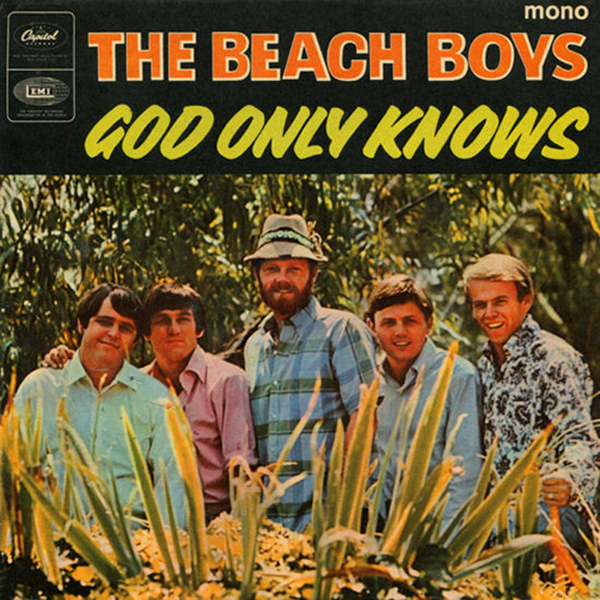
Mettler: Very fun indeed. Let’s now zero back in on “God Only Knows” because it’s such an important track in so many ways, and it means so much to so many people. And it’s something that had to be exactly right, especially when it comes to Carl [Wilson]’s lead vocal. Were you conscious of making sure that song really had to be something special in Atmos?
Martin: Yeah. This one was really hard, because it is one of the greatest songs ever written. And there also has to be a personal level on this one because it’s one of my favorites—but I feel I can never do it justice. Does that make sense? I cannot go, “That’s the definitive version of ‘God Only Knows.’ It’ll never sound better.” It’s the John Lennon thing, isn’t it? It’ll never sound as good as it does in your head.
Mettler: I get what you’re saying. But when I’m listening to the “without you” parts in the back or where sometimes Carl extends a vowel sound, it seems like you’re catching the magic that’s already there—and you’re just giving us an extra sprinkle, or whatever you want to call it.
Martin: Exactly! And when the vocals start relaying to each other—when the harmonies flood in—it can be truly beautiful, and then it can be more glorious because you have more channels to play with. What’s happening in those parts of the song is, I’m playing around with space there. I’m playing around with the fact that there is more than one person singing. There’s no point in denying it. And certainly, at the end with the answer vocals, what I’m doing there is trying to create a sense of, “these are people in a room, singing to each other.” It’s a very different thing.
If we take “Sloop John B,” for example—that is not a personal song. That is a song en masse. But with something like “God Only Knows,” it is a deeply personal song—an incredibly personal song. Therefore, my wish is to have Carl up and centered, and intimate. And then the backing vocals can be supporting him, because that’s what “God Only Knows” is. In the other Atmos tracks, maybe I’m going for more with the vocals, but with “God Only Knows,” you can hear the breaths from around the room.
Mettler: The “God Only Knows” Atmos mix made me feel like I was eavesdropping on a conversation I shouldn’t have been in on, you know? It made me feel like, “I’m here, but maybe I shouldn’t be here.” And I think that’s the effect you want. You want an emotionality to come through like that.
Martin: Yeah. And, at the same time, it needs to be confident, because it’s a confident song. It’s not “In My Room,” do you know what I mean? More than anything else, the thought process of mixing all this in Atmos is not a technical one, but it is more of, “How does it make you feel?”
Mettler: Now that you’ve done Pet Sounds, can we get you to do “Good Vibrations” in Atmos next? That seems to be a logical follow-up.
Martin: I’d love to do it, if they should ask me. It’s not up to me. like all of these things.
Mettler: Well, I hope they do. I think a lot of people assume “Good Vibrations” is on Pet Sounds, and it’s not. It’s a single that came out a few months after the album, but it’s an extension of what’s going on here on this record—and I feel like we now need your stamp on it, so it needs to be done. Would you be open to that concept? [“Good Vibrations” was released as a single in October 1966, and it went to No. 1 in a number of countries including the U.S. and the UK.]
Martin: Oh, I’d definitely be open to the concept—and I think it should be done, whether it’s done by me, or by someone else.
There’s a lot of pressure on doing tracks like that one. You want to do certain tracks and you think, “This will be great in Atmos.” And then you start doing them and you go, “Oh my God!” It’s interesting when you’re doing these mixes because the expectation is so high on certain tracks, and “Good Vibrations” is one of those tracks where the expectation is already so high.
Part of what makes Brian’s work so brilliant is because he planned on it being in mono, obviously—and so, for the textures and for the density, those things need to be together. You have to be very careful when you’re mixing a track like “Good Vibrations” in Atmos so that you don’t pull things too far apart.

THE BEACH BOYS
PET SOUNDS — IN DOLBY ATMOS
(choose your listening service here)
1. Wouldn’t It Be Nice
2. You Still Believe In Me
3. That’s Not Me
4. Don’t Talk (Put Your Head On My Shoulder)
5. I’m Waiting For The Day
6. Let’s Go Away For Awhile
7. Sloop John B
8. God Only Knows
9. I Know There’s An Answer
10. Here Today
11. I Just Wasn’t Made For These Times
12. Pet Sounds
13. Caroline, No
